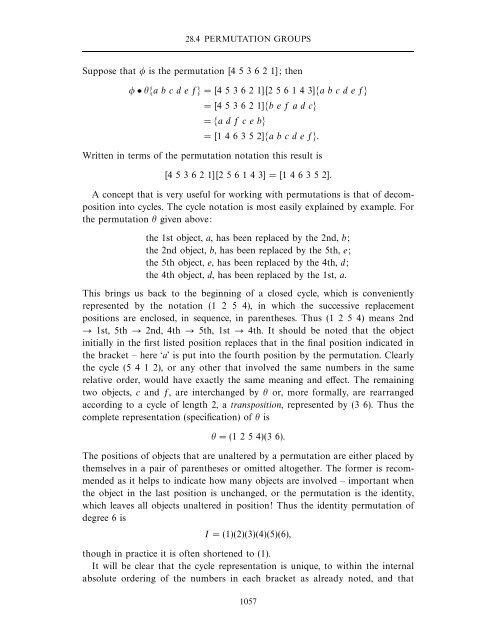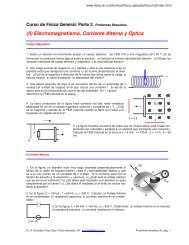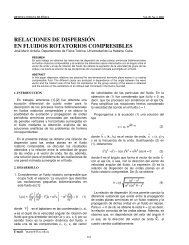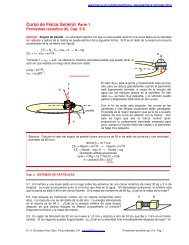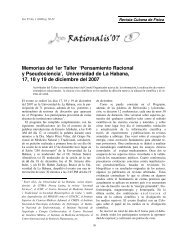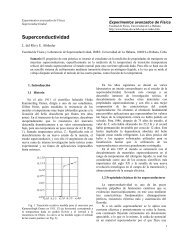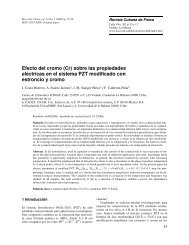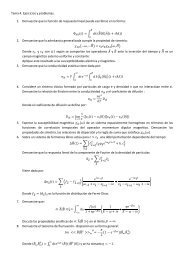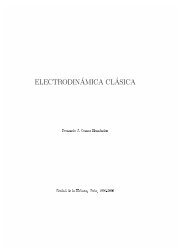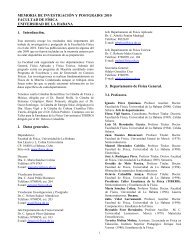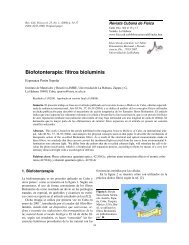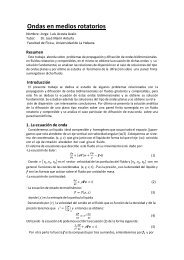GROUP THEORYThe multiplication table for this set of six functions has all the necessary propertiesto show that they form a group. Further, if the symbols f 1 , f 2 , f 3 , f 4 , f 5 , f 6 arereplaced by I, A, B, C, D, E respectively the table becomes identical to table 28.8.This justifies our earlier claim that this group of functions, with argument substitutionas the law of combination, is isomorphic to the group of reflections androtations of an equilateral triangle.28.4 Permutation groupsThe operation of rearranging n distinct objects amongst themselves is called apermutation of degree n, and since many symmetry operations on physical systemscan be viewed in that light, the properties of permutations are of interest. Forexample, the symmetry operations on an equilateral triangle, to which we havealready given much attention, can be considered as the six possible rearrangementsof the marked corners of the triangle amongst three fixed points in space, muchas in the diagrams used to compute table 28.7. In the same way, the symmetryoperations on a cube can be viewed as a rearrangement of its corners amongsteight points in space, albeit with many constraints, or, with fewer complications,as a rearrangement of its body diagonals in space. The details will be left untilwe review the possible finite groups more systematically.The notations and conventions used in the literature to describe permutationsare very varied and can easily lead to confusion. We will try to avoid this by usingletters a, b, c, . . . (rather than numbers) for the objects that are rearranged by apermutation and by adopting, before long, a ‘cycle notation’ for the permutationsthemselves. It is worth emphasising that it is the permutations, i.e. the acts ofrearranging, and not the objects themselves (represented by letters) that formthe elements of permutation groups. The complete group of all permutations ofdegree n is usually denoted by S n or Σ n . The number of possible permutations ofdegree n is n!, and so this is the order of S n .Suppose the ordered set of six distinct objects {a b c d e f} is rearranged bysome process into {b e f a d c}; then we can represent this mathematically asθ{a b c d e f} = {b e f a d c},where θ is a permutation of degree 6. The permutation θ can be denoted by[2 5 6 1 4 3], since the first object, a, is replaced by the second, b, the secondobject, b, is replaced by the fifth, e, the third by the sixth, f, etc. The equationcan then be written more explicitly asθ{a b c d e f} = [2 5 6 1 4 3]{a b c d e f} = {b e f a d c}.If φ is a second permutation, also of degree 6, then the obvious interpretation ofthe product φ • θ of the two permutations isφ • θ{a b c d e f} = φ(θ{a b c d e f}).1056
28.4 PERMUTATION GROUPSSuppose that φ is the permutation [4 5 3 6 2 1]; thenφ • θ{a b c d e f} = [4 5 3 6 2 1][2 5 6 1 4 3]{a b c d e f}= [4 5 3 6 2 1]{b e f a d c}= {a d f c e b}= [1 4 6 3 5 2]{a b c d e f}.Written in terms of the permutation notation this result is[4 5 3 6 2 1][2 5 6 1 4 3] = [1 4 6 3 5 2].A concept that is very useful for working with permutations is that of decompositioninto cycles. The cycle notation is most easily explained by example. Forthe permutation θ given above:the 1st object, a, has been replaced by the 2nd, b;the 2nd object, b, has been replaced by the 5th, e;the 5th object, e, has been replaced by the 4th, d;the 4th object, d, has been replaced by the 1st, a.This brings us back to the beginning of a closed cycle, which is convenientlyrepresented by the notation (1 2 5 4), in which the successive replacementpositions are enclosed, in sequence, in parentheses. Thus (1 2 5 4) means 2nd→ 1st, 5th → 2nd, 4th → 5th, 1st → 4th. It should be noted that the objectinitially in the first listed position replaces that in the final position indicated inthe bracket – here ‘a’ is put into the fourth position by the permutation. Clearlythe cycle (5 4 1 2), or any other that involved the same numbers in the samerelative order, would have exactly the same meaning and effect. The remainingtwo objects, c and f, are interchanged by θ or, more formally, are rearrangedaccording to a cycle of length 2, a transposition, represented by (3 6). Thus thecomplete representation (specification) of θ isθ = (1 2 5 4)(3 6).The positions of objects that are unaltered by a permutation are either placed bythemselves in a pair of parentheses or omitted altogether. The former is recommendedas it helps to indicate how many objects are involved – important whenthe object in the last position is unchanged, or the permutation is the identity,which leaves all objects unaltered in position! Thus the identity permutation ofdegree 6 isI = (1)(2)(3)(4)(5)(6),though in practice it is often shortened to (1).It will be clear that the cycle representation is unique, to within the internalabsolute ordering of the numbers in each bracket as already noted, and that1057


